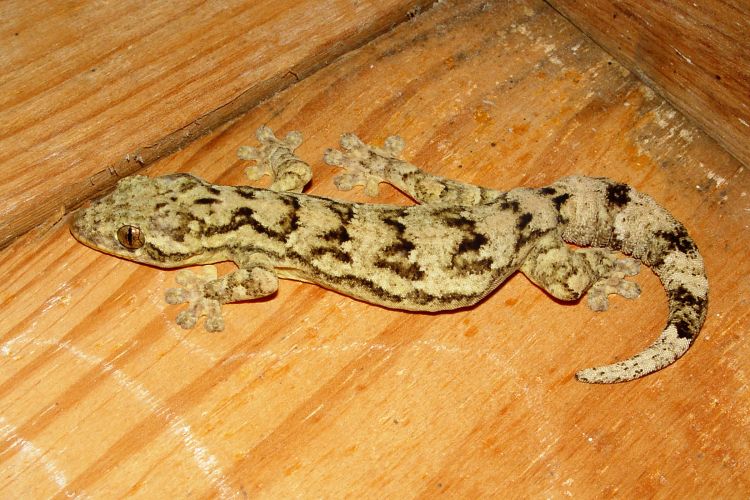
Turnip Tail (Thecadactylus rapicauda). This was the first herp of the trip and was one of the better finds. It was brought to our attention by one of the employees at La Milpa -- it resides in his living room! Pretty big too -- about 4" SVL.
Our first stop was Rio Bravo in northwest Belize.

Turnip Tail (Thecadactylus rapicauda). This was the first herp
of the trip and was one of the better finds. It was brought to our
attention by one of the employees at La Milpa -- it resides in his
living room! Pretty big too -- about 4" SVL.
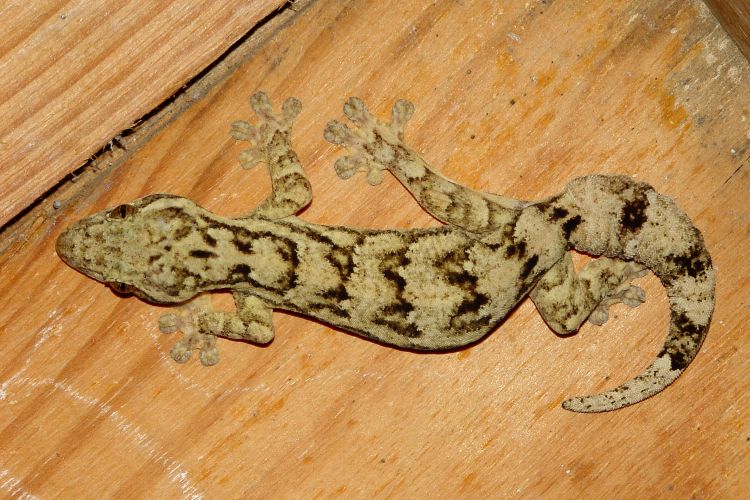
Another look -- check out the fat tail.
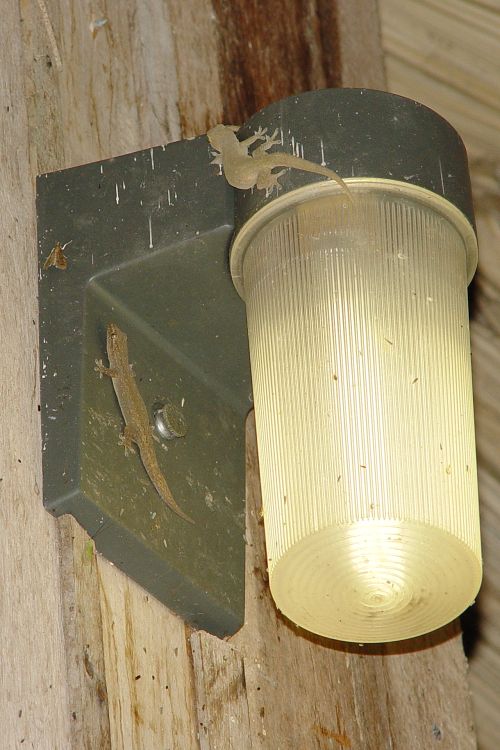
Every light in the area had a Hemidactylus or two...
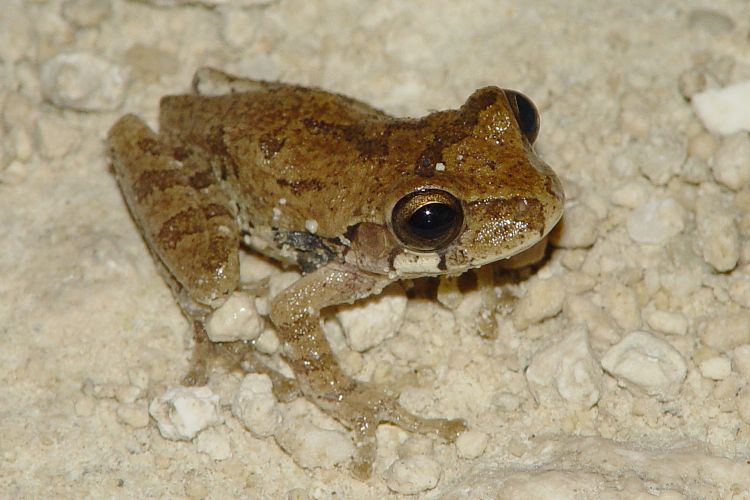
One of the few amphibians seen. I think this is a
Mexican Treefrog (Smilisca baudinii).
We found three on the road one night.
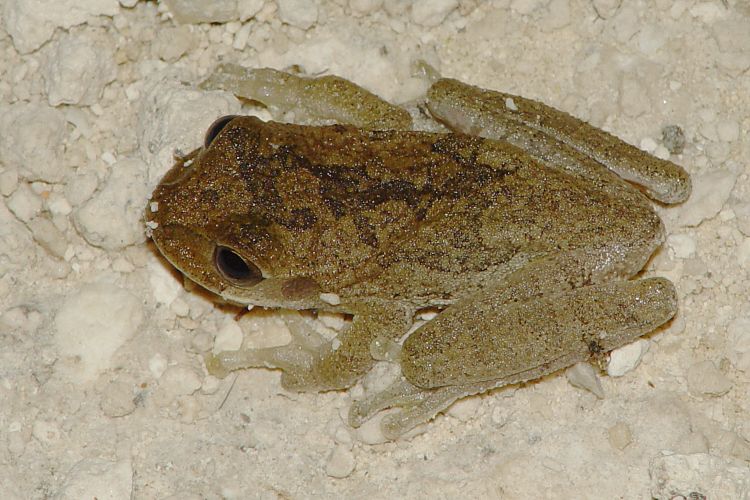
Another one.
I found the anoles of the genus Norops to be rather confusing. Not only are there several species in Belize, but their patterns are variable and depend upon the age and sex of the animal. The identifications given are very tentative, please feel free to help us out here!
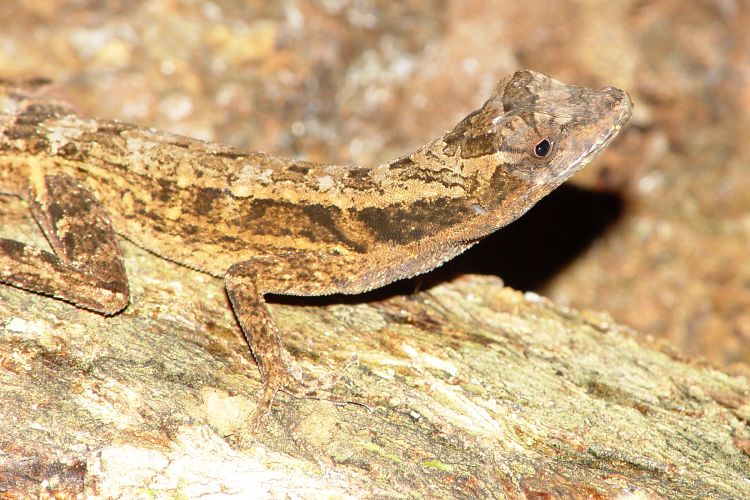
Norops sp.
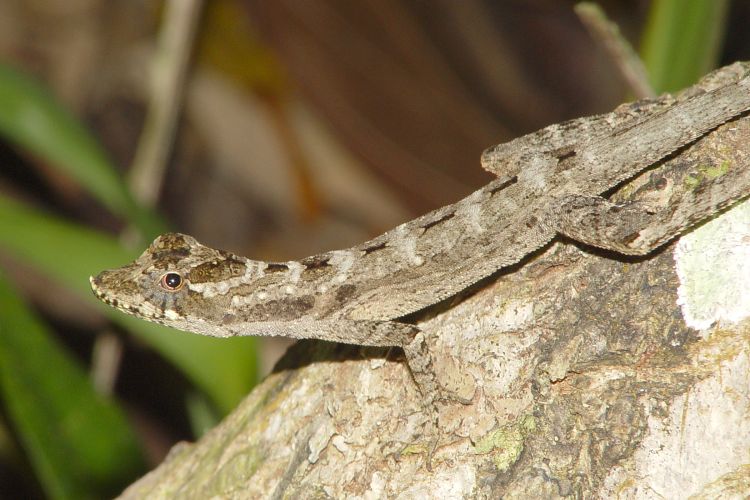
Ghost Anole (Norops lemurinus).
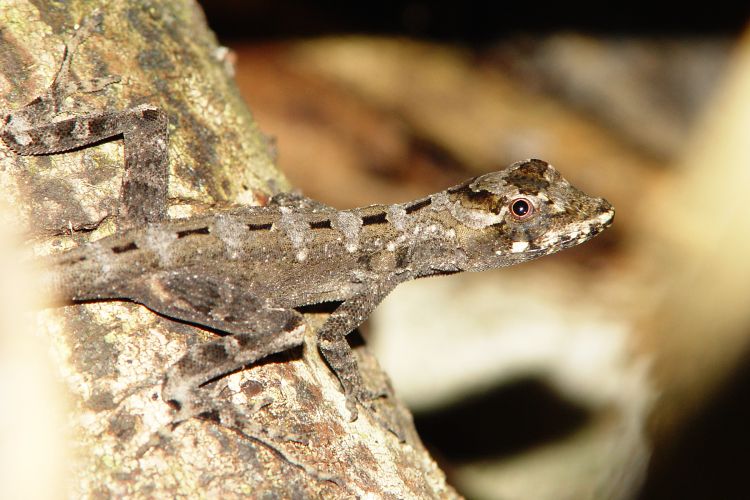
Ghost Anole (Norops lemurinus).
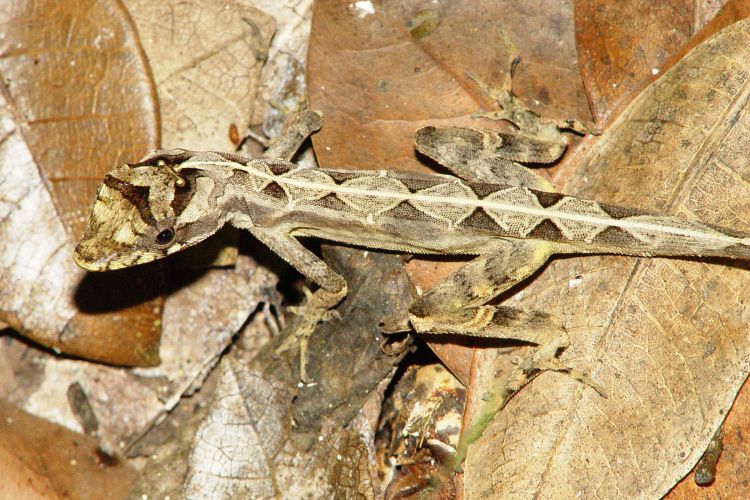
Norops sp. Wild pattern on this one...
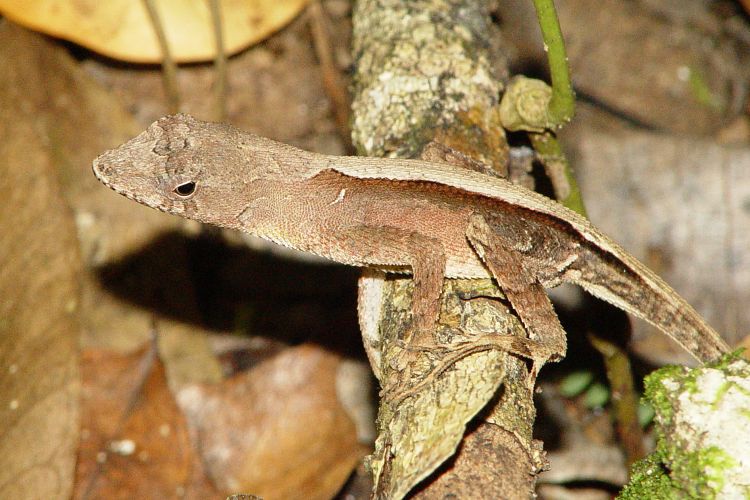
Greater Scaly Anole (Norops tropidonotus).
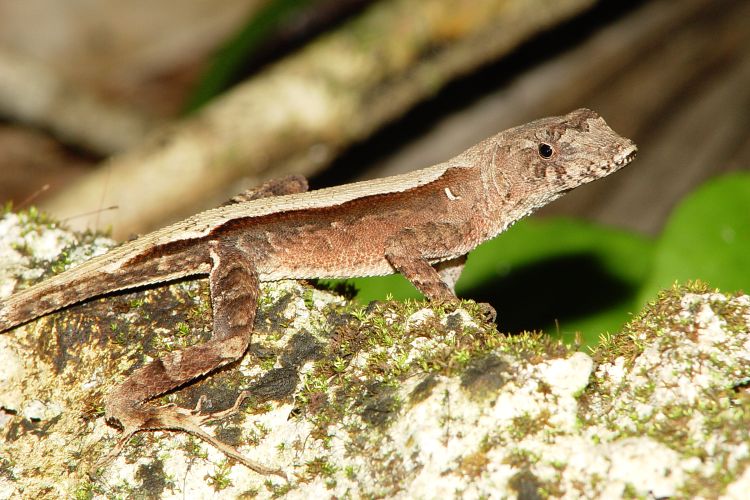
Same animal as above.
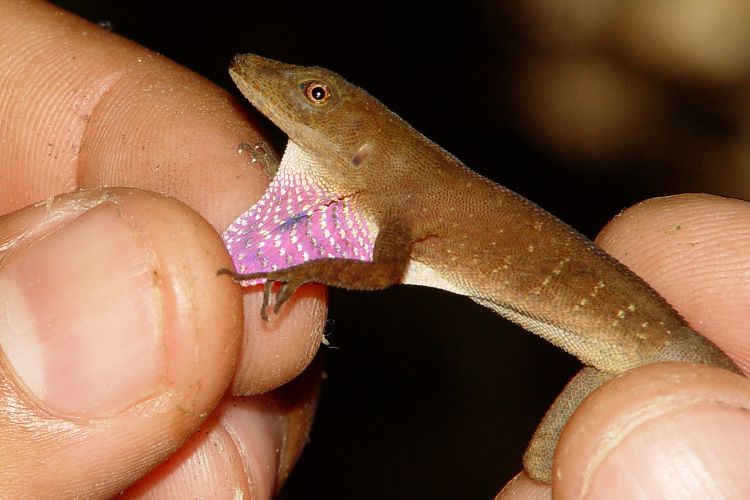
Lesser Scaly Anole (Norops uniformus). I'm pretty sure about
the i.d. of this one -- the dewlap is pretty definitive. Unfortunately
it escaped before I could get another photo...
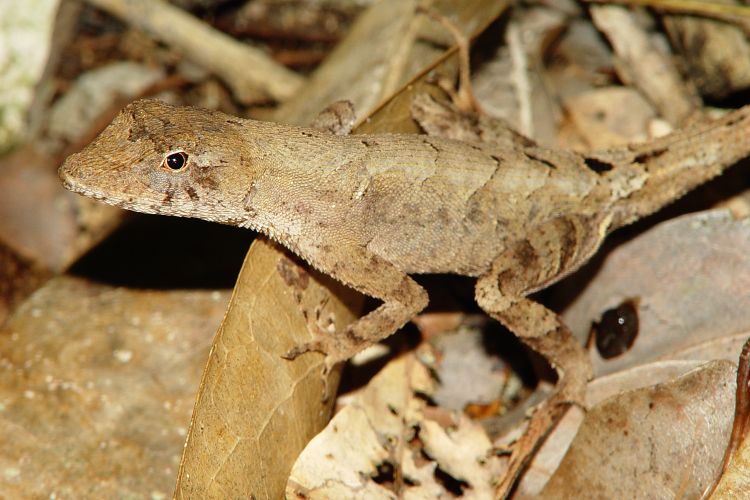
Greater Scaly Anole (Norops tropidonotus).
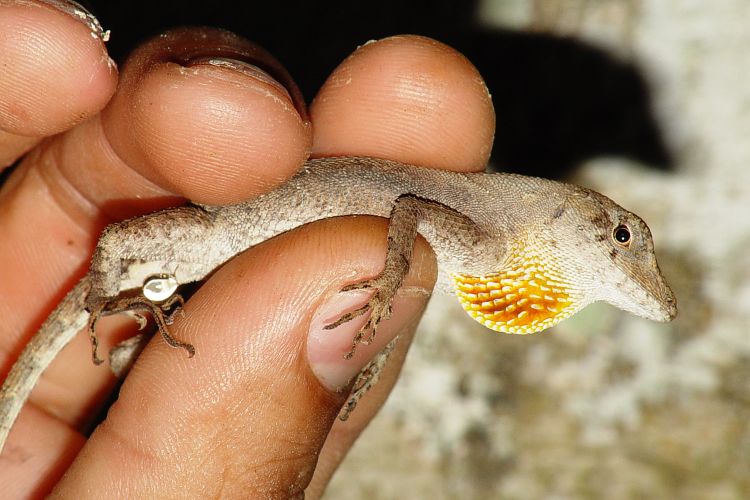
Same animal as above.
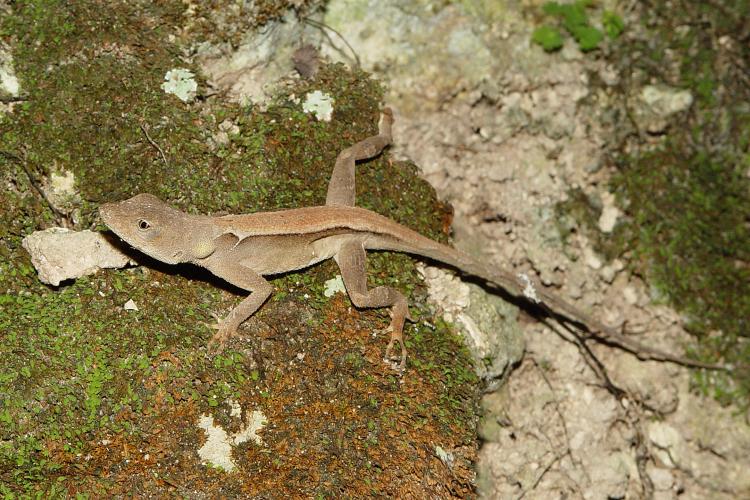
Greater Scaly Anole (Norops tropidonotus).
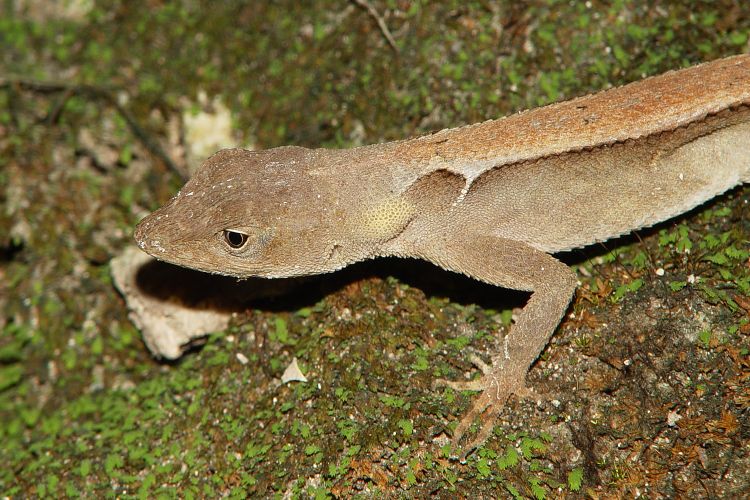
Same animal as above.
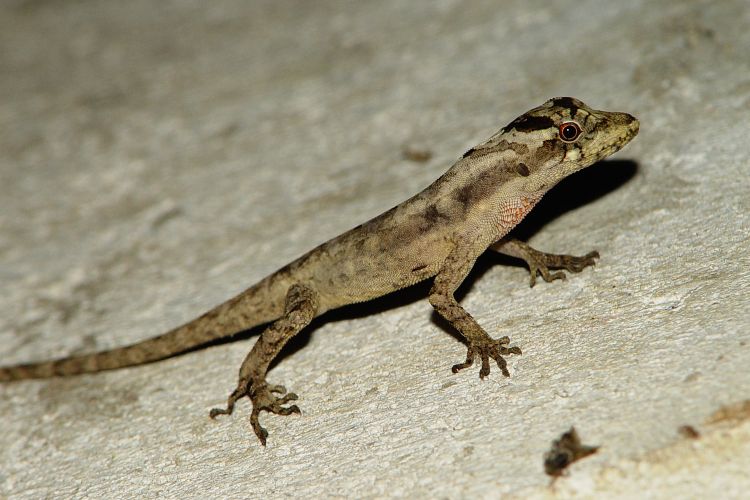
Norops sp.
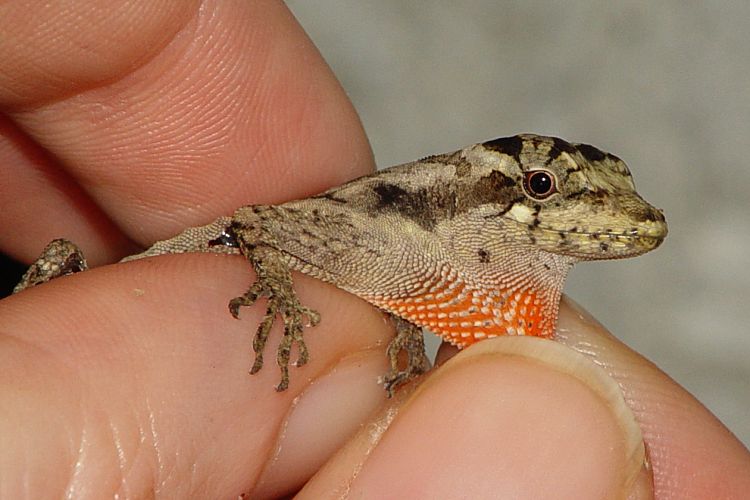
Same animal as above.
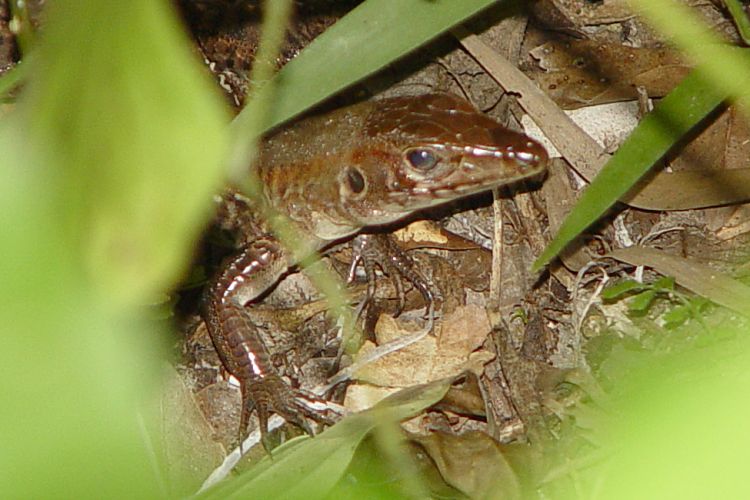
Ameiva sp. The only one of these we saw. This was the
best photo I could get before it disappeared into the jungle.
On one hike we came upon a pile of tin (the locals call
it a pile of zinc). I felt right at home. About halfway through
we found this:
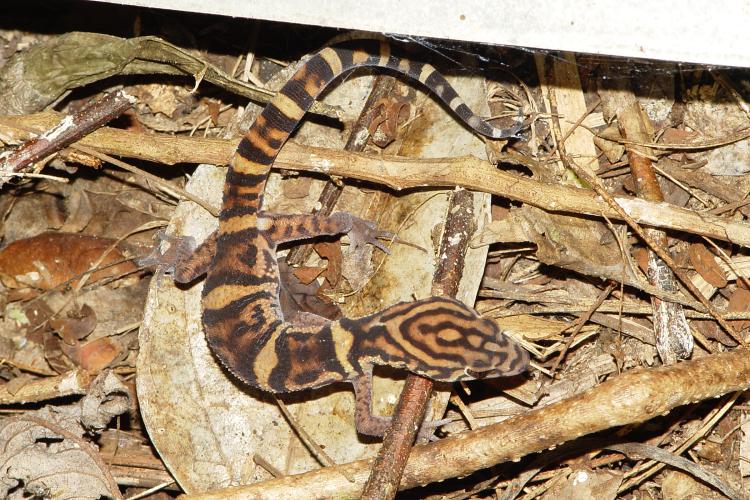
Yucatan Banded Gecko (Coleonyx elegans).
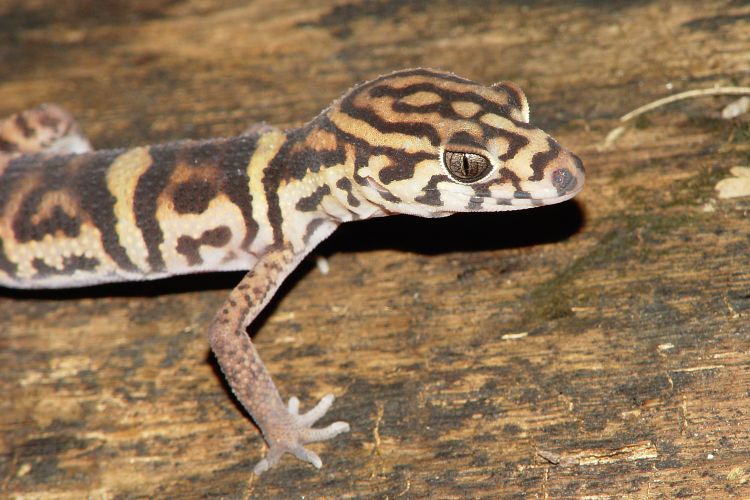
A closer look.
At the bottom of the pile we found this:
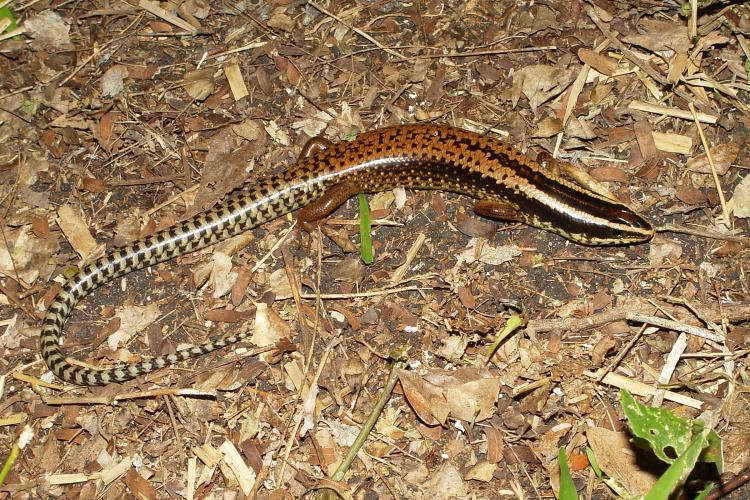
Schwartze's Skink (Eumeces schwartzei). Perhaps the
coolest herp of the trip.
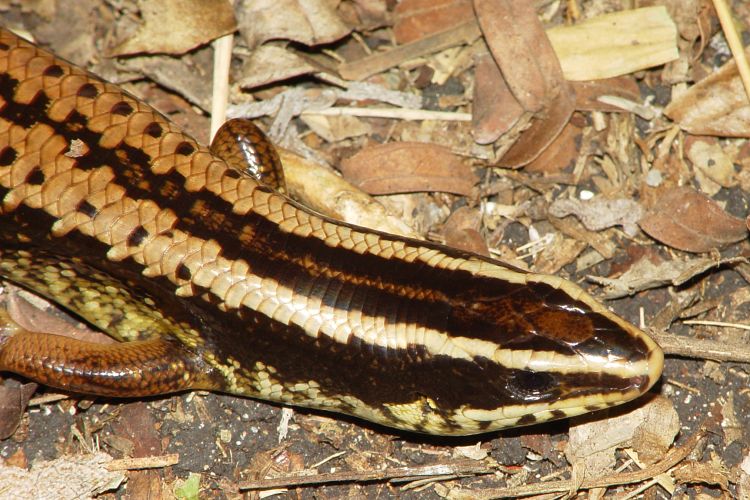
Up close.
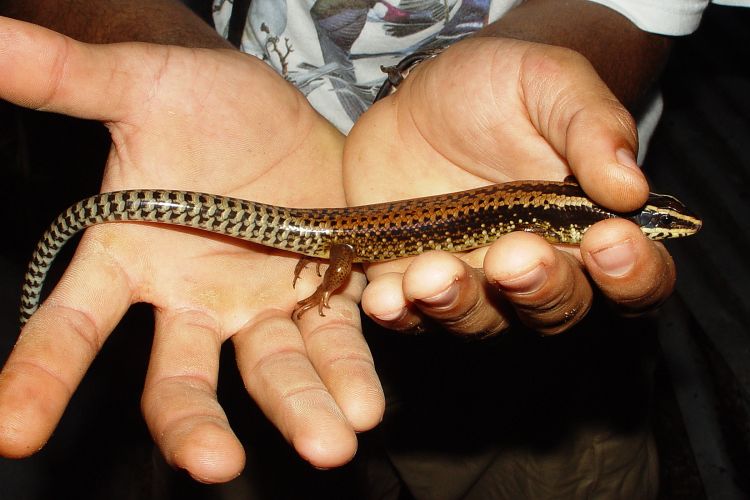
Quite a hand full.
We spotted this on the screen door of a building:
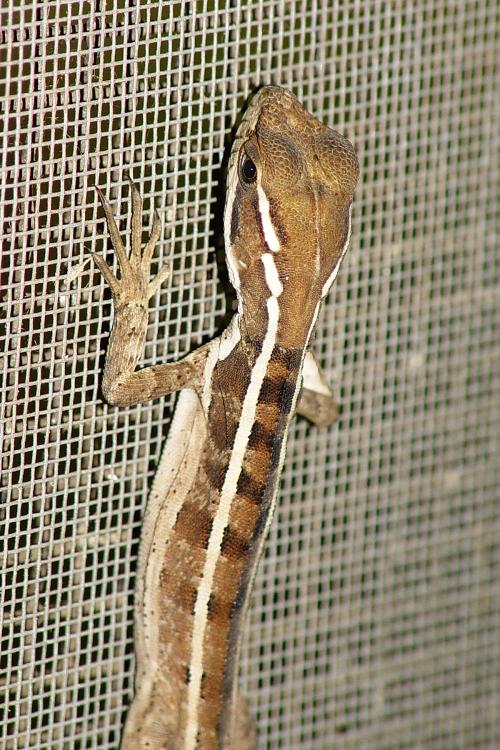
Juvenile Brown Basilisk (Basiliscus vittatus). Photographed in situ.
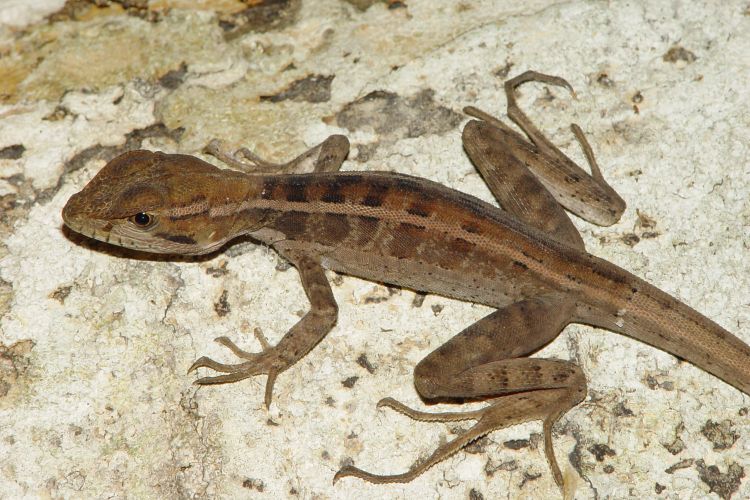
Same animal as above. Notice how much the white stripes darkened
after we captured and posed the animal.
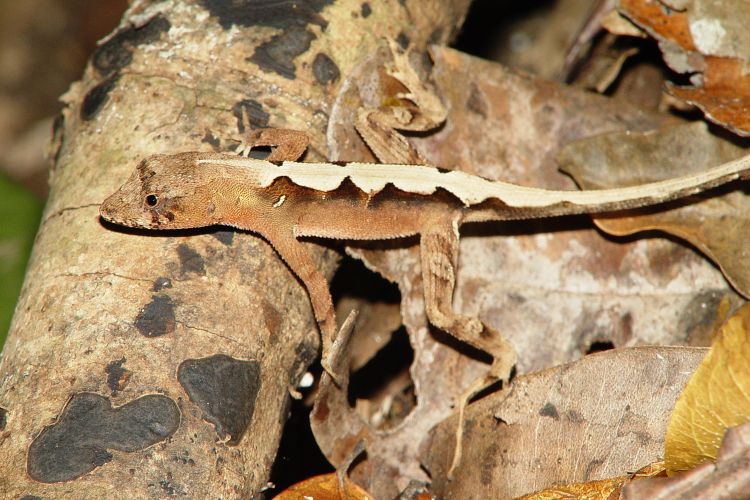
Greater Scaly Anole (Norops tropidonotus).
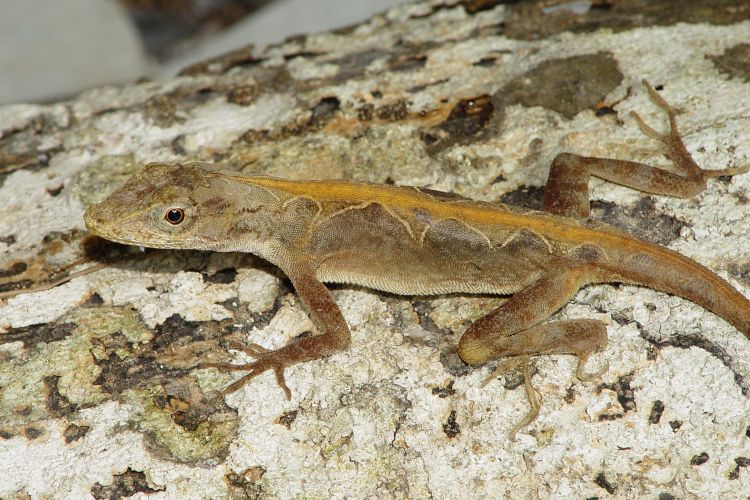
Norops sp.
I also saw a Speckled Racer (Drymobius) here but was unable to capture or photograph it. Snakes proved to be few and far between on this trip.
This was found under a rock:
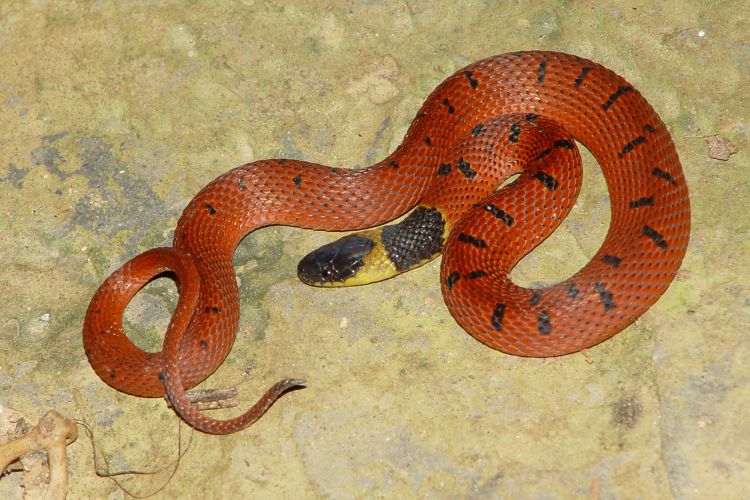
Redback Coffee Snake (Ninia sebae), about 7" TL.

This individual seemed to "play dead" -- keeping its body rigid
even if flipped over...
We saw several other herps here but none were photographed: tadpoles, small skinks in the leaf litter, and Roxanne saw a basilisk run across a stream.
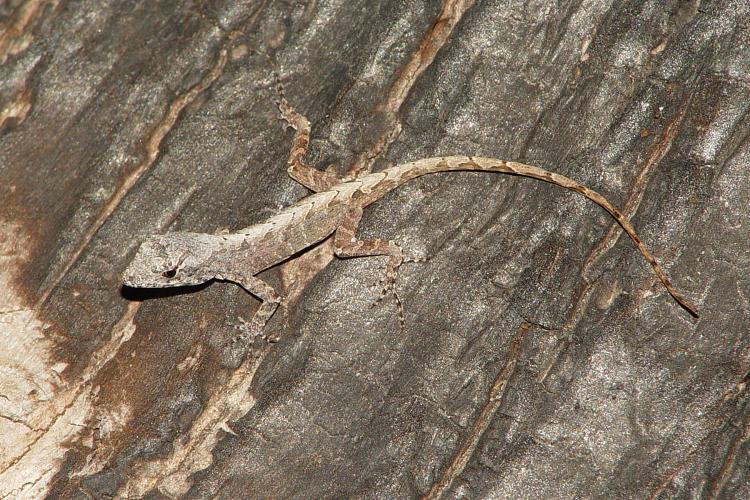
Baby Brown Anole (Anolis sagrei).
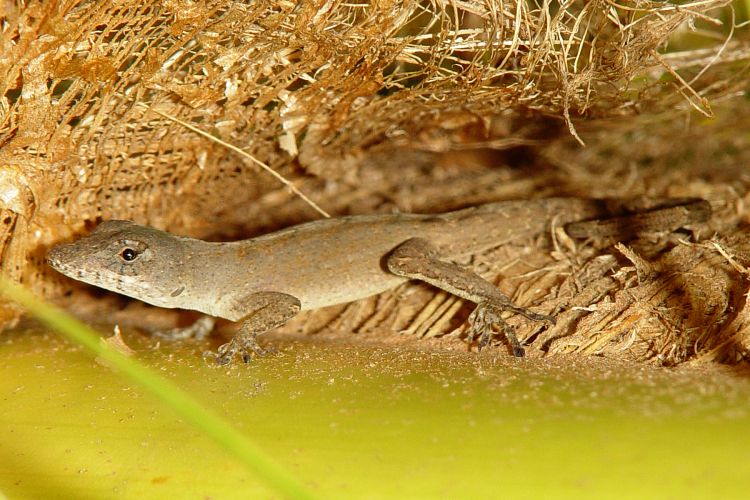
Brown Anole (Anolis sagrei).
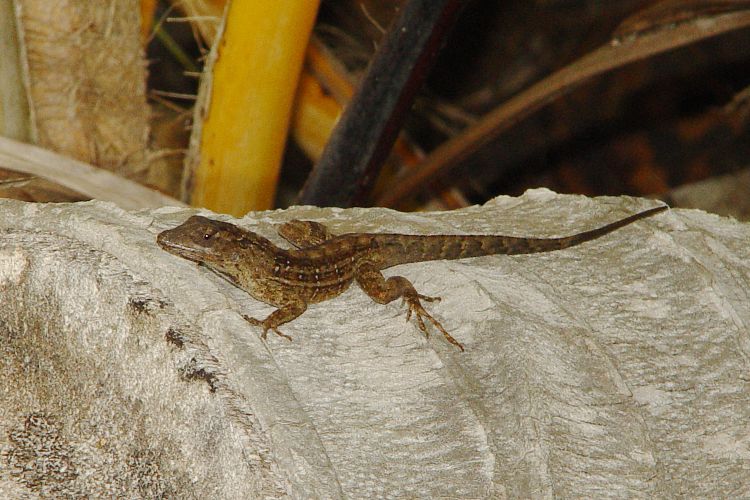
Brown Anole (Anolis sagrei).
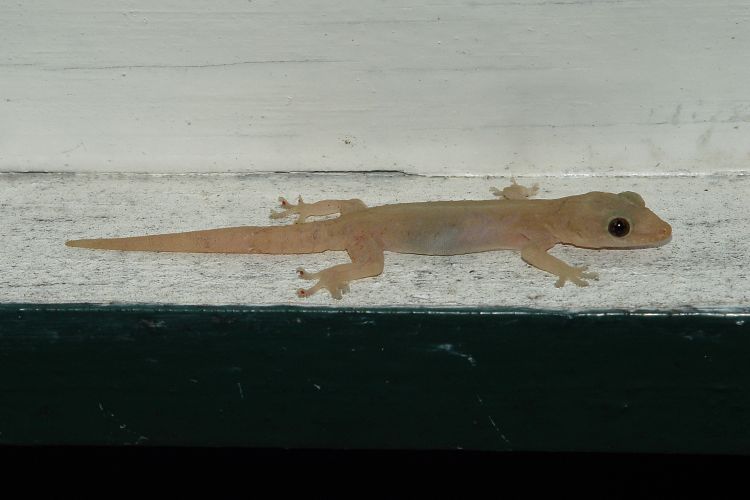
Hemidactylus.
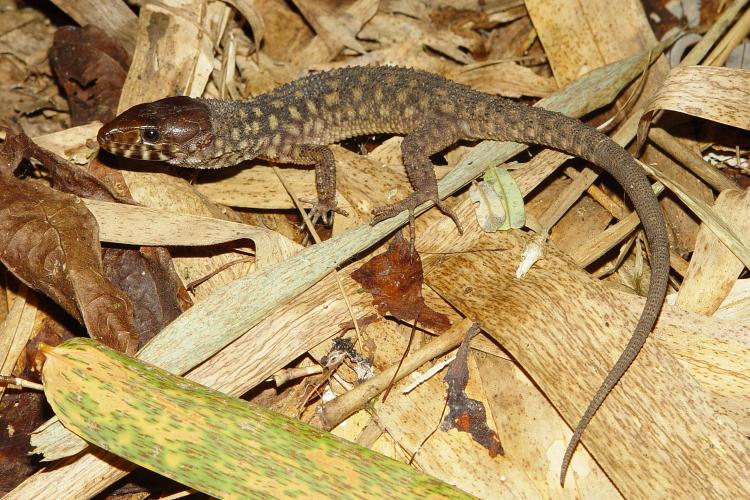
Yellow-spotted Night Lizard (Lepidophyma flavimaculatum),
6.5" TL, found under a log. We found two of these very interesting
lizards. They move slowly and deliberately, but when in hand they
are surprisingly powerful (strong jaw and body muscles).
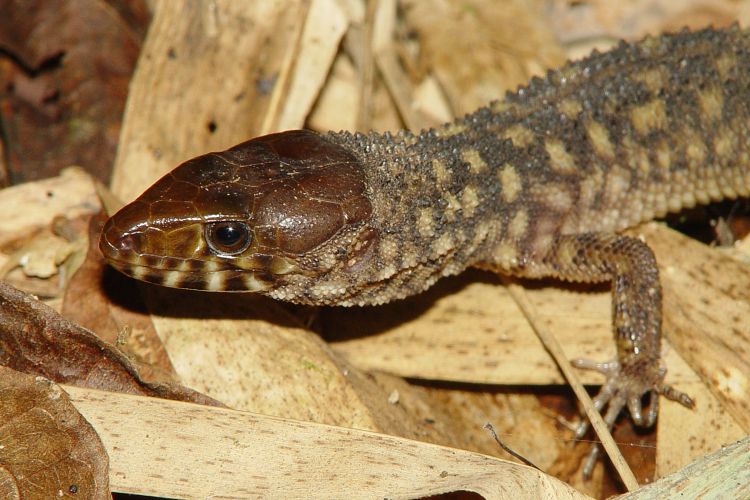
A closer look.
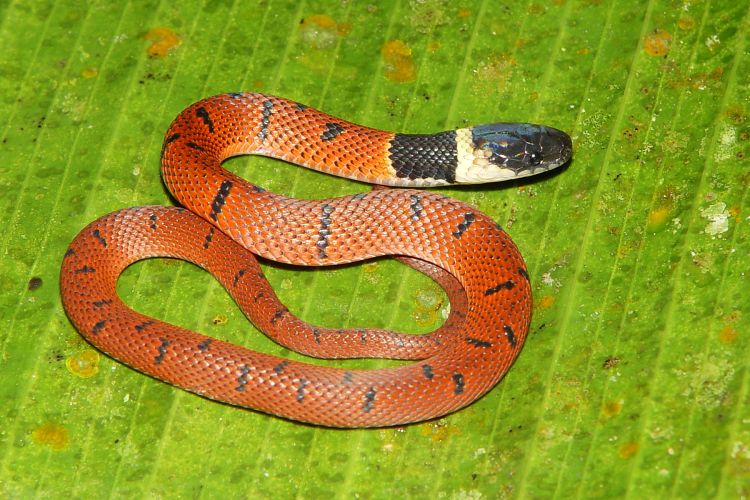
Another Coffee Snake was found under palm litter, even
smaller -- about 6" TL.
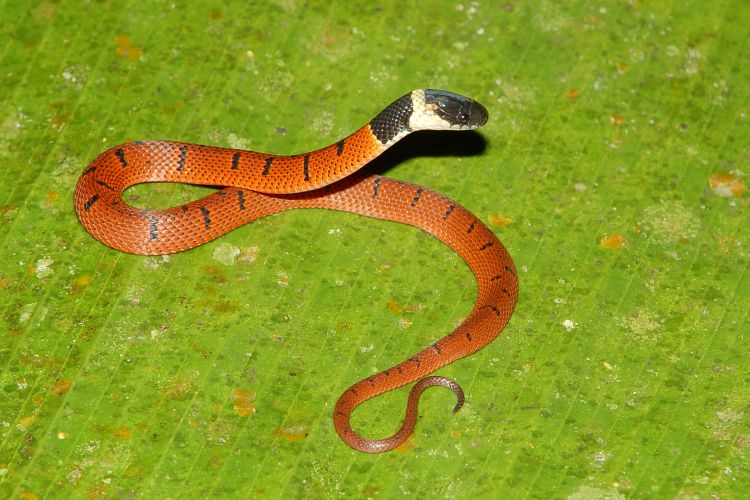
This one thought it was a cobra.
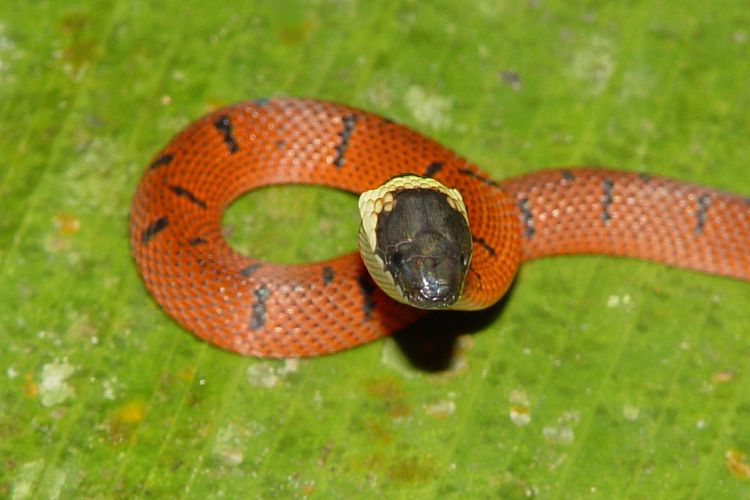
Even spreading its neck... In his book "A Field Guide to the
Amphibians and Reptiles of the Mayan World,"
Julian Lee says this behavior may mimic the tail display
used by some coral snakes.